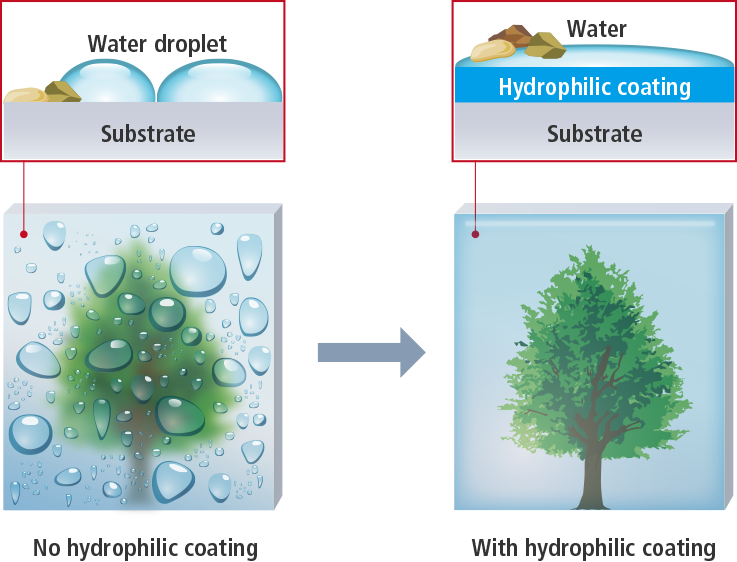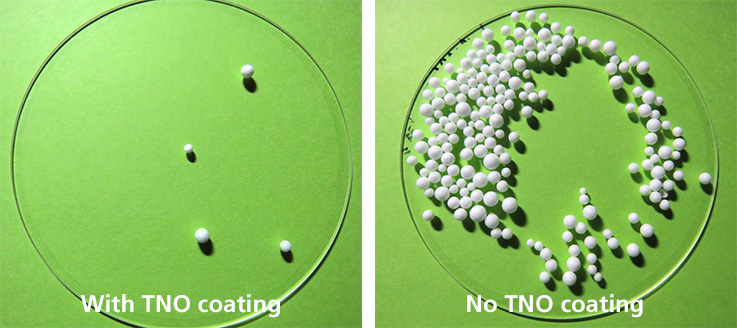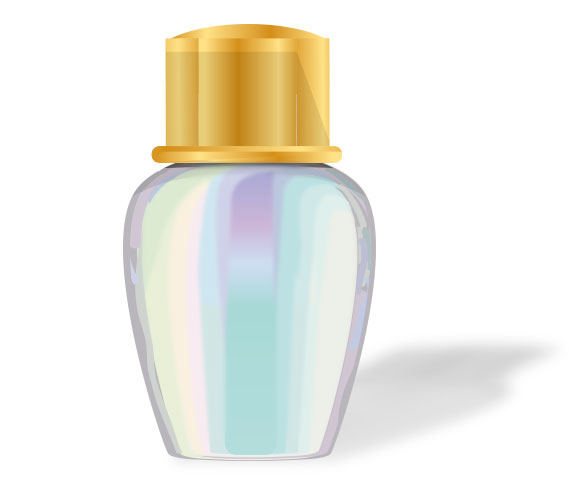How a thin film gives rise to many possibilities
Controlling light: Optical, anti-reflective, and color-separation coatings
These coatings control light, such as by improving light transmittance or allowing only specific color wavelengths to be reflected. Several layers of thin film in different materials and thicknesses are applied to achieve the intended function.

Improving visibility: Hydrophilic coating
Hydrophilic coating disperses water so that it doesn’t form vision-clouding droplets. This not only improves visibility but also prevents dirt from adhering.

Preventing scratches and smudges: Anti-smudge coating
Anti-smudge coating repels water and oil to prevent dirt from adhering to it. As it makes surfaces slippery, it also prevents scratches.
SURFCLEAR100, OF-SR, etc.

Conducting electricity: Transparent conductive coating (anti-static coating)
This is used on touchscreens and similar parts. It is also used to prevent dust and pollen from adhering.
I.T.O, LUMILEAD TNO, ZnO, etc

Preventing water vapor and oxygen from permeating: Barrier coating
This coating prevents air and water from passing through. It is used in bags used to contain food products.
Adding color: Decorative coating
Such coatings are usually applied to decorate cosmetic bottles and other similar packaging.
ZrO2, etc
